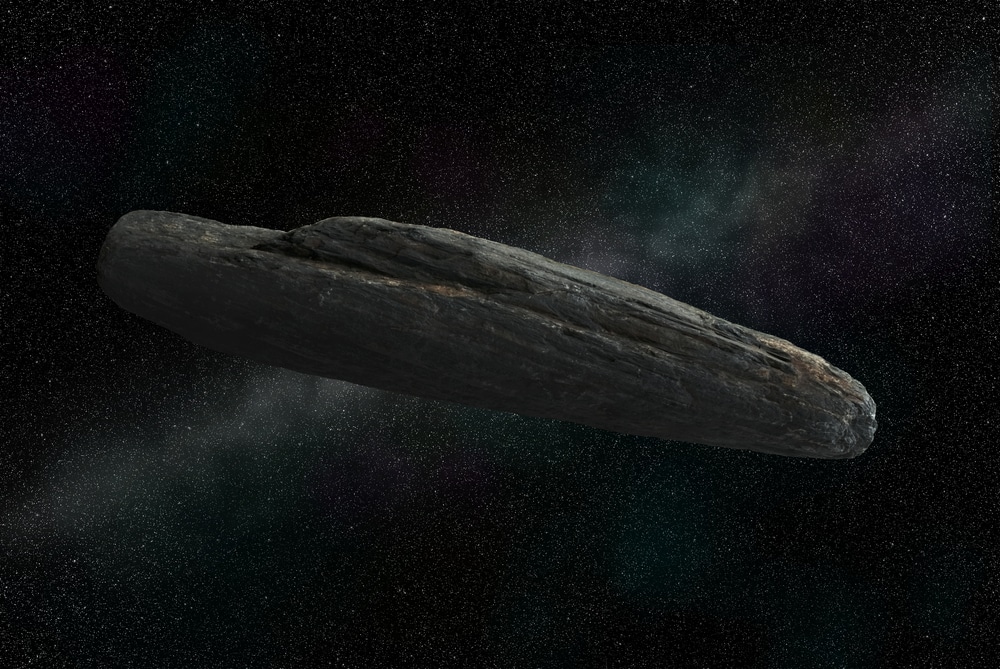(OPINION) The official in charge of a secretive Pentagon effort to investigate unexplained aerial incursions has co-authored an academic paper that presents an out-of-this-world theory: Recent objects could actually be alien probes from a mothership sent to study Earth.
In a draft paper dated March 7, Sean Kirkpatrick, head of the Pentagon’s All-domain Anomaly Resolution Office, and Harvard professor Avi Loeb teamed up to write that the objects, which appear to defy all physics, could be “probes” from an extraterrestrial “parent craft.”
It’s unusual for government officials, especially those involved in the nascent effort to collect intelligence on recent sightings, to discuss the possibility of extraterrestrial life, although top agency officials don’t rule it out when asked.
After Loeb posted it online, the paper gained notoriety from a post on Military Times and has also circulated among science-focused news outlets.
More than half of the five-page paper is devoted to discussing the possibility that the unexplained objects DoD is studying could be the “probes” in the mothership scenario, including most of the page-long introduction. One section is titled: “The Extraterrestrial Possibility” and another “Propulsion Methods.”
Kirkpatrick’s involvement in the academic paper demonstrates that the Pentagon is open to scientific debate of the origins of UFOs, an important signal to send to the academic world, experts said.
But they add that his decision to attach his name to a theory considered in most academic circles to be highly unsubstantiated also raises questions about AARO’s credibility.
The paper explains that interstellar objects such as the cigar-shaped “Oumuamua” that scientists spotted flying through the galaxy in 2017 “could potentially be a parent craft that releases many small probes during its close passage to Earth.”
The paper goes on to compare the probes to “dandelion seeds” that could be separated from the parent craft by the sun’s gravitational force. It examines the physics of how the smaller craft could move through the Earth’s atmosphere to reach the surface, where they could be spotted by humans.
The paper notes that the “probes” could use starlight to “charge their batteries” and the Earth’s water as fuel. It also speculates on the motive for aliens to send exploratory probes to Earth.
“What would be the overarching purpose of the journey? In analogy with actual dandelion seeds, the probes could propagate the blueprint of their senders,” the authors write. “As with biological seeds, the raw materials on the planet’s surface could also be used by them as nutrients for self-replication or simply scientific exploration.”
The authors acknowledge that they do not know for sure that there are any functioning extraterrestrial crafts near Earth. But the Galileo Project, Loeb’s privately funded academic effort to look for UFOs, intends to investigate this possibility, they write.
The AARO team at the Pentagon was created last year to replace a task force within the Office of Naval Intelligence previously looking into UFOs. AARO was established by Congress to serve as the focal point for the governmentwide investigation into hundreds of reports of “unidentified aerial phenomena,” including many that appear to perform highly advanced maneuvers.
Kirkpatrick is a respected science and intelligence professional, with more than two decades of experience studying physics and working in the defense intelligence space.
He has held top positions in DoD, U.S. Space Command, the National Security Council, and across the intelligence agencies, winning several awards for his work. Before his current position, his most recent assignment was as chief scientist at DIA’s missile and space intelligence center. (READ MORE)








